WriteMark
Plain Language Standard
Reaching a plain language standard helps you reach your audience

Aim high — achieving a plain language standard will help your document work for your readers
An international colleague asked us about our two plain language standards:
Is the Write Plain Language Standard the same as the criteria for assessing a document and giving it the WriteMark®? Or are the Standard and the WriteMark® two different and separate tools?
Here’s how the two Standards came to be, how they relate to each other, and how they’re different.
The Write Plain Language Standard is available for all to use
The 10 elements in the Write Plain Language Standard are a highly condensed version of the 28 elements in the WriteMark® Plain Language Standard.
The WriteMark® came first, and only documents assessed by our approved assessors can carry it. Several years later, because our clients wanted a standard they could apply themselves, we created a shortened form.
This shorter, easy-to-use standard became Write’s Short Plain English Standard. We’d customise it specially to suit our clients’ specific needs. And clients would often include their standard in their style guide.
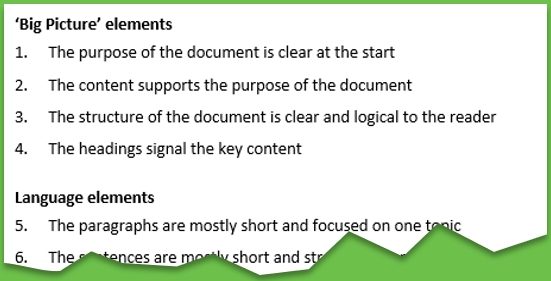
Aim high — achieving a plain language standard will help your document work for your readers. Image by Write Group Limited
Eventually we made the short form (now called the Write Plain Language Standard) freely available under a Creative Commons licence. Anyone can use it to check and improve the quality of their writing.
We often use the Write Plain Language Standard as an audit tool. Our clients want to understand how their writing measures up against widely accepted plain language criteria.
Download the Plain Language Standard at the Write website
The WriteMark® is a mark of document quality available by assessment
We use the WriteMark® criteria when an organisation wants to show that their document has been independently assessed as meeting a very high standard of plain language. Achieving the WriteMark® gives them the right to display the WriteMark® logo — seen as a quality mark — on their document.
WriteMark® Plus is another option we’ve recently developed. It combines the WriteMark’s® elements-based assessment with document user-testing. We or another approved testing agency will test the document with readers who match the profile of the target reader.
Many clients now prefer to achieve the WriteMark® Plus, which demonstrates an even greater commitment to plain language.
Read about an insurance policy that achieved the WriteMark® Plus
Read about a legal document that achieved the WriteMark® Plus
Get in touch if you’d like to know more about the WriteMark®
Lynda Harris November 10th, 2020
Posted In: The WriteMark
Tags: industry standards, plain language, the WriteMark, Write
A plain language love story

Image by Andre Furtado / Pexels licence
We’re head-over-heels for plain language, and we’re always excited when we find others who share our passion. Take Southern Cross Travel Insurance (SCTI): we’ve just awarded the WriteMark® to their new domestic travel policy.
SCTI decided the time was right to offer an insurance policy that would help New Zealanders feel safe and secure when travelling around New Zealand. The WriteMark® shows that SCTI is dedicated to bringing their customers a policy that’s clear and easy to understand.
Nick Bassett, Acting Head of Sales, Product and Marketing, says they wrote the policy with their customers in mind:
We’re committed to providing our customers with excellent service, and knowing what they’re covered for when they buy their policy is incredibly important. The WriteMark® stamp is an endorsement of transparency and integrity, which is why we’re so pleased to have launched our first policy document in plain language, and to have achieved this recognition.
To celebrate, we’ve created a video that showcases everything there is to love about an insurance policy with the WriteMark®.
Your customers deserve a policy that understands them
Insurance should give us peace of mind because we know we have support in times of stress and uncertainty. A policy written with everyday words, short sentences, and useful headings locks in that peace of mind, because you know exactly what you’re covered for.
By writing your insurance policy in plain language, you’re showing that you care about your customers and can think from their perspective. Your transparency will help build their trust.
Learn more about writing insurance policies in plain language
Want to start your own plain language love story? Ask yourself what your reader needs from you, and make sure you deliver it in a way that’s easy to understand.
Insurance cover is complicated, and your readers will thank you for finding a way to lead them through it, without all the jargon. You’ll find lots of helpful tips in our easy-to-use checklist — the Write Plain Language Standard.
Download Write’s free Plain Language Standard
Take our Plain Language Foundations online course
Read our recent blog post on how plain language can help institutions win back trust
Find out more about getting a WriteMark® assessment
Anne-Marie Chisnall September 14th, 2020
Posted In: The WriteMark, WriteMark Holders
Tags: Insurance writing, plain language, policy writing, WriteMark
Kimble Center’s Power of Attorney goes to the top of its class

Organising a power of attorney document for your healthcare means others can take care of you when you can’t. Image by Bimatshu Pyakuryal / Unsplash licence
We all hope we’ll always be able to make our own decisions about our healthcare. But what if we can’t?
The Kimble Center for Legal Drafting, based at Western Michigan University–Cooley Law School in the US, has published a new Power of Attorney document. People can use the Power of Attorney to set up someone they trust to make decisions about their healthcare if they’re not able to. What’s more, the Power of Attorney is easy to understand — and it’s free to use for US citizens.
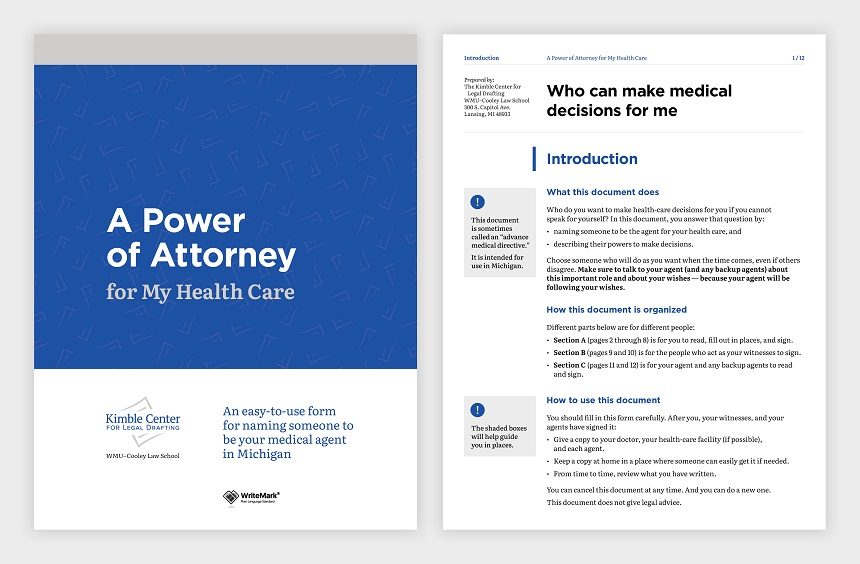
Design elements guide the user through the document. Image by Gusto Design.
The Kimble Center’s legal team decided they wanted their new document to be top of its class. So they first asked the members of their advisory board for feedback. Then they applied for another layer of review through the WriteMark assessment process.
The WriteMark® assessment considers purpose, structure, content, language, and design as part of a rigorous document analysis.
Design to support the purpose of the document
The Center engaged the team at Gusto Design to create a design that would support clarity and readability.
Annette Ellis, Creative Director at Gusto, explains:
We worked with the Kimble Center for Legal Drafting to make a complex process clear and easy to understand. The plain language used for the Power of Attorney form is visually supported using design elements that guide the user through the form, making it easy for them to understand and fill out.
Instructions are provided as shaded boxes adjacent to the form fields, providing users with additional information that helps them understand how to fill out the form correctly. This extra guidance is critical to ensure the form accurately captures their wishes.
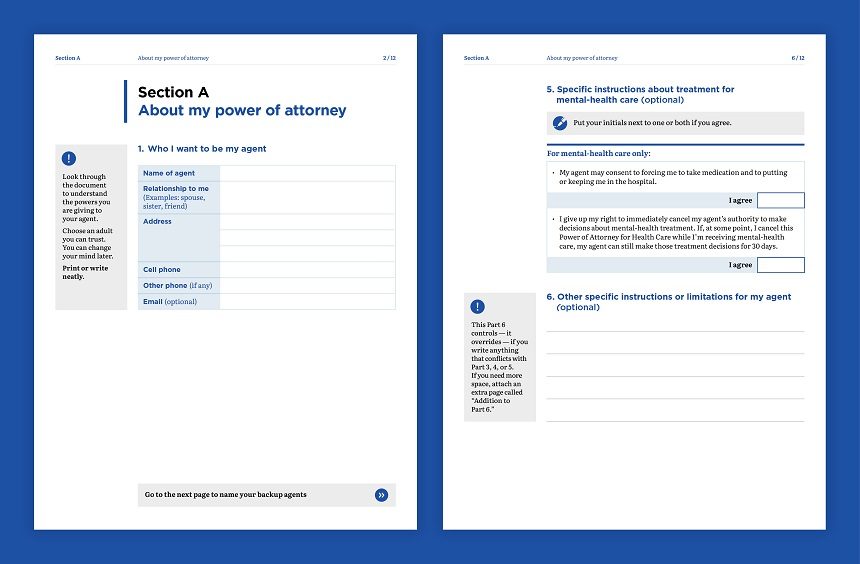
Clear design is critical to ensure the form accurately captures the user’s wishes. Image by Gusto Design
All boxes ticked
With its plain language and simple design, the Power of Attorney for My Health Care goes to the top of its class. It meets all the elements of the WriteMark® Plain Language Standard — and it’s the first document of its type to achieve the Standard.
Joseph Kimble, Distinguished Professor Emeritus at WMU–Cooley Law School, acknowledges the input from the WriteMark® team:
I’m grateful for the invaluable suggestions we received from Anne-Marie Chisnall (a member of our international board of advisers) and then from the WriteMark® assessment team. Those suggestions significantly improved almost every page.
And tested with users too
Since we originally published this story, researchers at Michigan State University have user-tested the Power of Attorney document. The Kimble Center applied recommendations from the user-testing report and did a little rewording and redesigning of the document. With these changes, the Power of Attorney achieved WriteMark® Plus.
WriteMark® Plus is awarded to documents that have reached the WriteMark® Standard and that also undergo user-testing for further fine-tuning.
Find out more about WriteMark® Plus — the ultimate in communication excellence
Legal documents unlike anything that the public has seen before
The Kimble Center for Legal Drafting paves the way for innovative legal documents. This article on the Center’s website describes its origins and goals.
Anne-Marie Chisnall July 31st, 2020
Posted In: The WriteMark, WriteMark Holders, WriteMark Plus
Tags: accessibility, Joseph Kimble, Kimble Center for Legal Drafting, Legal documents, plain language, the WriteMark, WriteMark Plus
Life isn’t fair — but how we act can be

The Fair Insurance Code ticks all the boxes for insurers and consumers. CC-BY-NC-ND
Fairer insurance for all New Zealanders dovetails perfectly with the WriteMark®’s mission of a fairer society where everybody can get the information they need.
This week the Insurance Council of New Zealand published the Fair Insurance Code 2020. The Code helps to build trust and confidence in the insurance industry, which may lead to a fairer financial system for all of us.
The Code safeguards consumers by committing general insurers to:
- act honestly and fairly
- develop, market, and sell insurance products responsibly
- identify and address instances of poor conduct.
A fair code is a clear code
As the Code has reached a high standard for plain language, we’re pleased to say it has also earned the WriteMark®. This means it has a clear purpose, structure, language, and design. Readers can understand and act on the information they need. For example, the Code tells readers at the start what to expect:
…The code describes how your relationship with your insurer should work, including what you need to tell them and how they need to respond.
The code:
- explains what the Fair Insurance Code covers and who it applies to
- describes the responsibilities you and your insurance company have
- explains what should happen when you make a claim or a complaint.
The Code uses straightforward language that talks directly to readers and is easy to understand. Sentences are short and uncomplicated. The writers have also made sure the Code is accessible for readers and speakers of other languages, and have produced a version in New Zealand Sign Language.
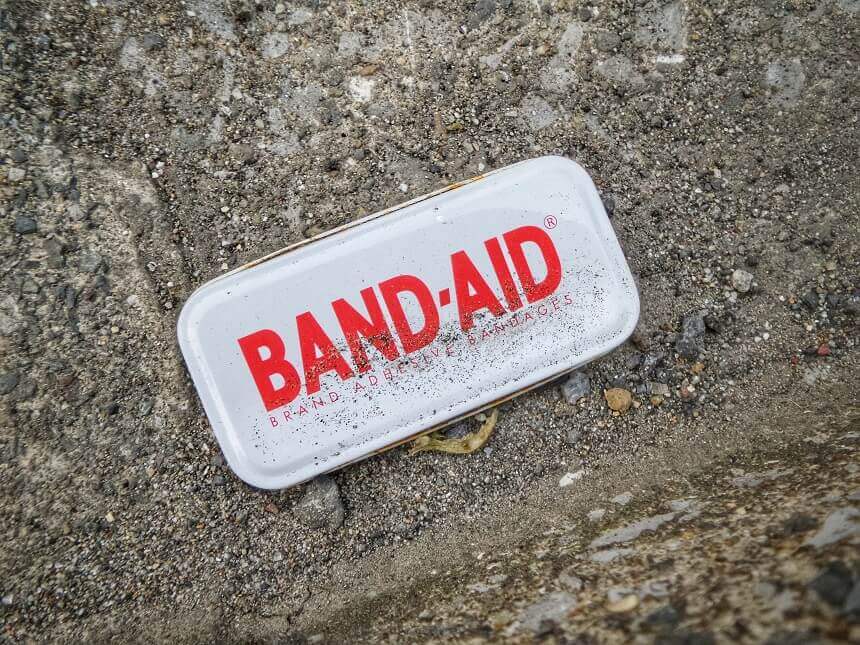
A financial band-aid should be fair and clear. Image by Franck V / Unsplash licence
Working together to support consumers
Minister of Commerce and Consumer Affairs Kris Faafoi describes insurance as a critical service that needs to support consumer financial resilience, and not undermine it. When insurers comply with the Code, consumers will find it easier to access financial support when the unexpected happens.
Allowing the insurance industry to self-regulate works with the law and helps to:
- put customers at the centre
- push for culture change in the industry
- set up robust internal processes.
More than the sum of its parts
The Fair Insurance Code has ticked boxes for all 28 elements of the WriteMark® plain language standard. But the Code’s impact and clarity add up to a lot more than that — and that’s fair.
Watch Hon Kris Faafoi introduce the Code
Anne-Marie Chisnall April 7th, 2020
Posted In: The WriteMark, WriteMark Holders
Writers and WriteMark®: Partners in care

Set up a partnership of care through the WriteMark process. Image by Isaac Quesada / Unsplash licence
So, believing what you do about the power of plain language, my question to you as both writer and consumer is, ‘What action can you take that is bigger and bolder than before?’ How can you make your sense of care count?
Lynda Harris, Chief Executive of Write and WriteMark®, talked about care as a catalyst for change in her speech at the Plain English Awards ceremony in November 2018. She went on to say:
Make your effort meaningful! What significant project needs your support and insights? Which of your reader groups are most in need? Who must you persuade? Where can you make a difference?
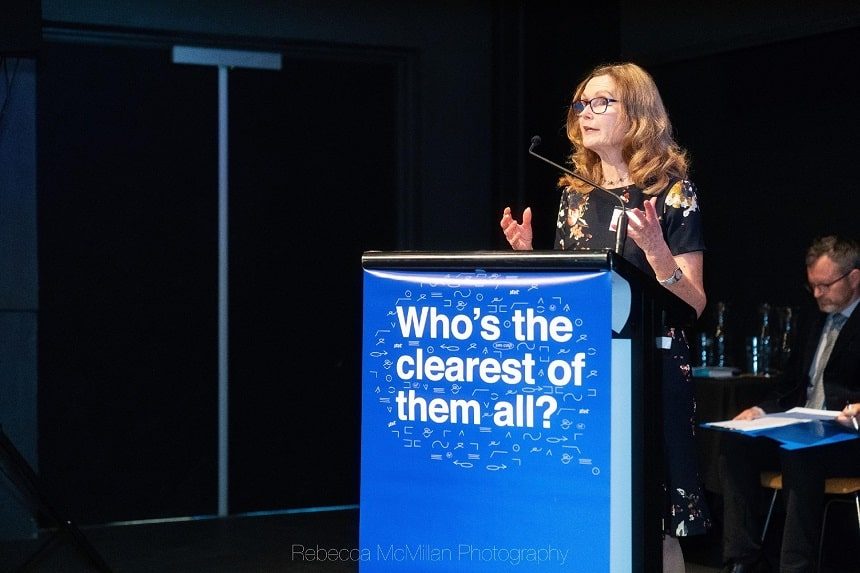
Lynda Harris urges writers and readers to care about clarity at the 2018 Plain English Awards. Image by Rebecca McMillan Photography / CC BY-NC
One way to make a bold and meaningful difference is to earn the WriteMark® Plain Language Standard on your document or website. This mark of ‘care in action’ isn’t necessarily easy to achieve, but the payoff is powerful. To meet the Standard, you’ll need to be committed to the process — and persistent.
The rigorous WriteMark® process sets up a partnership of care where document creators commit to plain language for their readers. Documents that reach the Standard have been checked against 28 elements covering purpose, structure, content, language, presentation, and accuracy. WriteMark® Plus adds user-testing with readers to the mix as well.
Discover more about the WriteMark elements of plain language
How to set up a partnership of care with the WriteMark
The writers, editors, designers, legal teams, and others who create WriteMark®-ready documents often work together for a long time. The WriteMark® review recognises the work everyone has put in so far and checks for any final changes needed to achieve the Standard.
If you start on the WriteMark® journey, you’ll need to consider feedback from your WriteMark® assessor. The document will probably change as your team considers the feedback and decides how to implement it. If you aim for WriteMark® Plus, you’ll also get feedback from real readers who reflect the characteristics of your intended audience.
Whatever the source of the feedback, you’ll know that it’s intended to help shape your document into one that exemplifies the best of plain language for the benefit of all readers. A document that reflects the care of all the professionals who have crafted it — and care for the readers who will ultimately read, understand, and act on it.

Set up a partnership of care through the WriteMark process. Image by Isaac Quesada / Unsplash licence
A Deed of care for the future
Once you’re on the way to achieving the Standard, you’ll sign an agreement called the WriteMark® Deed. The Deed sets out our WriteMark® relationship and explains how it works now, and for the future.
We’ll both celebrate and spread the news, hoping to inspire others to aim high for clarity and care for their readers.
Read about a WriteMark® project to rewrite an insurance policy
Join a face-to-face workshop on plain language principles
Get access to Write Online: videos and microlearning from the leaders in plain language
Anne-Marie Chisnall February 24th, 2020
Posted In: The WriteMark
Help! My appurtenance is on fire!

Avoid adding fuel to the fire with complicated communication. Image by Little Visuals. Pexels license.
When something catastrophic happens at home, you need to act fast. Can you imagine trying to get help like this?
“I need to undertake a disclosure with you. I’ll give you the full particulars. A bodily injury has occurred directly or indirectly. And I’m worried about the remediation. Can I priority request you and your apparatus be utilised to assist with the contamination damage?”
These convoluted phrases pepper real insurance documents. But when people need to understand what’s covered and how to make a claim, they need clear, accurate information that’s easy to navigate.
We’re thrilled that more insurance companies are taking this seriously.
Some companies are working hard on their legalese, rewriting dense, internally focused policies, forms, and letters so they are easy to read, easy to understand, and written for the reader rather than the writer.
And each year a few more make the WriteMark® grade.
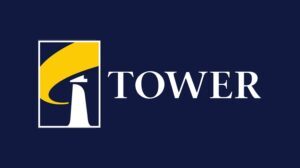
Congratulations to Tower for achieving the Write Mark and becoming a plain language champion! Image by Tower Insurance.
Tower Insurance is on a mission
Tower Insurance is one of the latest. Tower’s recent commercials proudly proclaim that they now have the WriteMark® on 14 home, contents, and vehicle policies. Their campaign dismantles difficult words and shows the difference straightforward language can make.
Words for work, or words for wonder?
Tower’s image of the word ‘appurtenance’ exploding symbolises their mission to simplify insurance.
And it had us scratching our heads.
Because, even though our WriteMark® assessors include authors, linguists, editors, teachers, and all-round word nerds, many of us didn’t know what ‘appurtenance’ meant.
These are people who send emails headed ‘Noun string of the day’, and can spend half an hour discussing the subtle difference between ‘moved home recently’ or ‘recently moved home’. They savour the richness, elegance, and (let’s be honest) perverseness of the English language.
We can all appreciate that ‘appurtenance’ is a lovely-sounding word with a fascinating etymology.
First known use of appurtenant
14th century
History and etymology for appurtenant
Middle English apertenant, from Anglo-French appurtenant, present participle of apurtenir to belong — more at ‘appertain’
History and etymology for appertain
Middle English apperteinen, from Anglo-French apurtenir, from Late Latin appertinēre, from Latin ad- + pertinēre to belong — more at ‘pertain’
But we’re also citizens and policy holders, who need to find our way through important information, often under stress. In times like these we want clarity, not a linguistic lift. We want information where writers have put the effort in to help us make decisions and take action.

There’s a time for tea and poetry and a time for getting the information you need. Image by Suzy Hazelwood. Pexels license.
Excellence for effort and an effort for excellence
We know it’s not straightforward, and companies that have reached the WriteMark® Standard for some documents deserve recognition for their courage and commitment. And once one or two documents have met the Standard, it’s very easy to spot those that still need work.
Congratulations to Tower!
But what does ‘appurtenance’ mean?
In home insurance, an appurtenance is a piece of property associated with the main dwelling. For example, it includes the garden and trees, and other structures on the property such as garages, decks, and swimming pools. It also includes items that are in some way part of the house, such as air-conditioning units, furnaces, and septic systems.
— many of which could catch on fire!
Anne-Marie Chisnall October 29th, 2019
Posted In: The WriteMark, WriteMark Holders
Tags: clear language, clear thinking, clear writing, improved writing, industry standards, plain language, power of plain language, Quality writing, Tower Insurance, writing for the public
Stand out from the crowd in three easy steps

Not a pair — 3 steps to the WriteMark: Image by Shumilov Ludmilla. Unsplash license.
You’ve got sparkling content, you want to show customers that you care about their needs, and you’re ready to wear your heart on your sleeve (or the WriteMark® logo on your document).
What do you do?
We’ve made the process for getting the WriteMark® straightforward and transparent — as easy as 1-2-3.
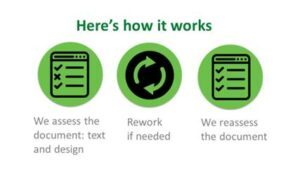
First things first
Get in touch and let us know what sort of content you’d like us to assess, and whether it’s one document or webpage, or part of something bigger. We’ll give you a price and a timeframe.
Step 1: Assess the document
Once we have your document, our assessors get to work holding it up against the 28 elements of the WriteMark® Standard. These elements fall into 5 categories.
- Structure
- Content
- Language
- Grammar, proofreading, and style
- Layout and overall presentation
If you’re applying for the WriteMark® Plus, we’ll also look at how you tested your content with readers and any changes you made based on their feedback.

Give your customers the clarity they deserve. Image by David Travis. Unsplash license.
Step 2: Rework if needed
We’ll give you a written assessment. You’ll easily see where your document or digital content has met an element of the WriteMark® Standard, and where it might need more work.
If something doesn’t meet the Standard straight away, we’ll explain why and suggest how to fix it. We’ll also give you an idea of the scale of the problem, and explain why it matters.
You can then make the changes, or ask us to.
Here’s an example of what we might suggest to help you improve your sentences to meet the Standard:
We suggest you rewrite some long sentences to make them shorter, clearer, and easier for readers to scan. For example:
Instead of
If any claim under this or any other policy with us is supported by any incorrect, incomplete, or fraudulent information or statement, then your claim is not payable and this policy will be automatically terminated from the date that the information or statement was supplied to us, or the statement or fraudulent claim was made to us. We may also terminate any other policy you have with us at the same time.
(Two sentences: 57 + 15 words)
You could write
If you claim under this policy and give us any incorrect, incomplete, or fraudulent information or statements, we may:
- refuse your claim
- end your policy from the date you supplied misleading information or statements
- end any other policy you have with us.
(One sentence broken into bullet points: 41 words)
Step 3: Reassess the document
We’ll look at your document again, and either award it the WriteMark® or let you know where you still need to make changes.
Your trusted advisors
You can ask us questions at any stage. Our team of assessors is here to help — we understand that it’s not always straightforward getting agreement from everyone involved in bringing a piece of writing to life. We’ve learned successful ways to communicate complex terms that at first seem intractable.
Your words are in good hands
Our assessment criteria are based on reader testing, cognitive fluency research, national and international standards, and many years of experience. We work on behalf of readers and in partnership with you.
Wear your heart with pride
After Step 3, you’re ready to tell the world that your document meets the highest standard of clarity and customer care.
Achieving and displaying the WriteMark®:
- shows you value clear communication
- tells your customers you care about their needs
- builds goodwill and loyalty
- sets you apart from your competitors
- saves you money.
Towards excellence
If you make changes to your content after receiving the WriteMark®, you’ll need to check back with us to make sure it still meets the WriteMark® Standard. Once you’re in the swing of hitting the clarity standard every time, we can show you even more ways to polish your content to perfection.
Anne-Marie Chisnall September 16th, 2019
Posted In: The WriteMark
Heart from the start — the story of the WriteMark®

If you’ve earned the WriteMark, you’re in good company. Image by Jon Tyson. Unsplash license.
It’s no coincidence that the WriteMark® logo is shaped like a heart. From a flicker of frustration in the late 90s to ‘the Oscars of plain language’ today, the notion of heart has pulsed through.
Heart in the sense of care and commitment to customers, and heart in the sense of backbone and determination.
In 1999, after almost 10 years helping people write better business documents, Write Group’s Lynda Harris felt a growing discontent.
‘I felt that we weren’t yet making enough of a difference.’
More talk than walk
With a few notable exceptions, we were still being asked to train groups of 12–14, rather than whole organisations. This meant that the effect of the training was often quickly undone by well-meaning managers. The pull of business-as-usual was strong.
‘A lot of our clients openly said they wrote in plain English, or had set that as an expectation, but in the thousands of business documents that passed through our hands each year, we saw very little in practice.’
A twin solution needed
It was crucial to get everyone to truly see what clear writing looked like, and to understand the profound effect it had on relationships and revenue.
Two things were needed: a clear standard of plain language and an easy way to show when something had met that standard.

A home-grown twin approach. Image by Jørgen Håland. Unsplash licence.
Crystal clear — but not over here
In 2000, Write began working with the UK-based Plain English Campaign and its badge of clarity — the Crystal Mark. The Crystal Mark showcased organisations that really cared about communicating clearly and openly. And it introduced both a quality standard and a way of recognising you’d met it.
But the UK-priced Crystal Mark proved too expensive for New Zealand businesses and didn’t feel relevant for our market. After 2 years, Lynda knew she had to try again with something just right for New Zealand.
WriteMark® sets the New Zealand standard
It took time, courage, and commitment, but by mid-2004 the idea for New Zealand’s homegrown WriteMark® had started coming to life.
‘We were a small, highly skilled company, passionate and dedicated to spreading the plain language message. If we were going to launch our own mark, it had to work.
‘We held focus groups in the public and private sectors and did extensive research into international plain language organisations. We set and refined the elements that make up the WriteMark® Standard, and set up a training and moderation process for assessors.
‘We based our fees as low as we could to encourage all New Zealand organisations to invest in plain English. We offered free WriteMark® assessments to organisations that had already advertised a commitment to plain English. They could immediately see the benefits of a standard-based assessment.’

From New Zealand to the world
On 1 March 2005, the WriteMark® launched, and it didn’t take long for businesses and government to take notice.
Over the years WriteMark®’s assessors have checked hundreds of documents against 28 criteria, and helped writers make changes where their documents don’t measure up.
The WriteMark® criteria reflect internationally recognised benchmarks for plain language and clear online communication. They include plain language, usability, suitability for the target audience, and design.
Although grown in New Zealand, the WriteMark® also distinguishes quality documents and websites overseas.
Recent recipients of the WriteMark® say the quality mark is the ultimate achievement for advocates of plain language. It reassures readers that something is clear, expert, and has reliable information that people can follow.
Achieving the WriteMark® shows your genuine care and consideration for customers, with a side effect of saving time and building trust.
User-testing a real plus
Today, holders of the WriteMark® can go even further to show they’re committed to excellent communication with customers. WriteMark® Plus combines an expert assessor view with insights from the people who matter.
A WriteMark® Plus quality mark shows that you’ve also rigorously tested your content on real people in your target audience
Using the power of words for good
For Lynda, it has always been about real people and using the power of words for good.
‘People can communicate their ideas and get the information they need. And ultimately it leads to a fairer, more respectful society.’
A society with heart.
Anne-Marie Chisnall September 10th, 2019
Posted In: Plain language, The WriteMark
Tags: clear language, clear thinking, clear writing, improved writing, industry standards, plain language, power of plain language, Quality writing, user-testing, WriteMark Plus, writing for the public